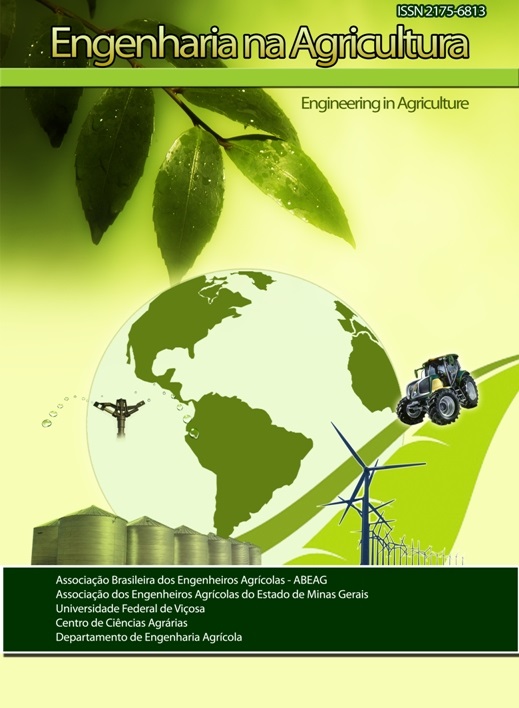TDR PROBES CONSTRUCTION AND EVALUATION FOR ESTIMATING SAP FLOW IN WOODY PLANTS
DOI:
https://doi.org/10.13083/reveng.v25i3.781Keywords:
dimensionamento, programas de análise TDR, Reflectometria no Domínio do TempoAbstract
The efficient water application in agriculture involves modern equipment and appropriate management of this resource. The water amount absorbed for crop can be determined by measuring xylem sap flow and, Time Domain Reflectometry (TDR) technique has potential to be accurate and virtually free of interference. Thus, the objective of this study was TDR probes construction and evaluation of different sizes that could be read in three different software for purpose of measuring sap flow in woody plants. The experiment was conducted at the Agricultural Sciences Center at UFSCar. Probes of six sizes (200, 150, 100, 70, 50 and 20 mm) were constructed and evaluated in distilled water at 20º C for three software applications of the technique, PCTDR at Campebell Scientific, WinTDR at Utah State University e o TDR-Lab at CSIC. The software demonstrates difficulties in automatic reading, WinTDR and PCTDR being more limited as the manual reading and PCTDR failed to perform readings in probes of 1.6 mm rod diameter. In conclusion, the TDRLab software is promising to analyze smaller sizes probes, but further studies are needed of the probes physical constitution, especially in epoxy for greater precision in the readings.Downloads
Downloads
Published
How to Cite
Issue
Section
License
Authors who publish with this journal agree to the following terms:
The author(s) authorize(s) the publication of the text in the journal;
The author(s) ensure(s) that the contribution is original and unpublished and that it is not in the process of evaluation by another journal;
The journal is not responsible for the views, ideas and concepts presented in articles, and these are the sole responsibility of the author(s);
The publishers reserve the right to make textual adjustments and adapt texts to meet with publication standards.
From submission, the author is fully conceding the paper's patrimonial rights to the publication, but retaining the owner of its moral rights (authorship and paper's identification) according to Creative Commons Attribution-Noncommercial.








 Licensed by
Licensed by 